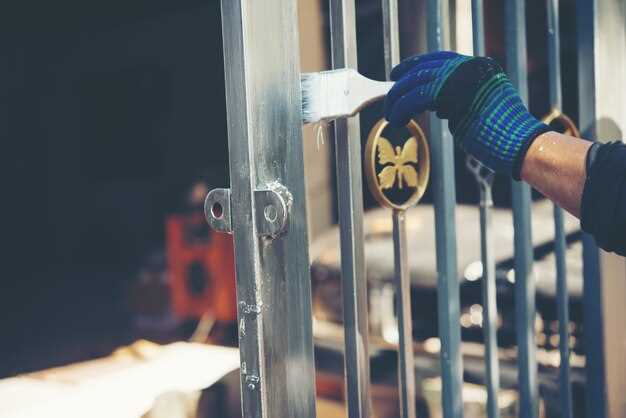
Installing a roll cage in a vehicle is an essential modification for anyone engaged in motorsports or off-road driving. A roll cage significantly enhances the safety of the vehicle by reinforcing its structural integrity, providing critical support in the event of a rollover or collision. By creating a protective framework around the occupants, it minimizes the risk of injury, ensuring that drivers and passengers are better shielded from impact forces.
Understanding the benefits of roll cage installation extends beyond basic protection. It can improve the vehicle’s handling dynamics and stability during extreme maneuvers, making it a worthwhile investment for performance enthusiasts. However, the process of installing a roll cage comes with its own set of guidelines and regulations that must be adhered to, which differ based on the type of racing or activities planned. Familiarizing oneself with these rules is just as crucial as the installation itself to fully leverage the advantages while complying with safety standards.
In addition to installation rules, safety tips should never be overlooked. Proper design, high-quality materials, and expert installation are key factors that contribute to the effectiveness of a roll cage. Equally, regular inspections and maintenance ensure that the roll cage remains effective throughout its use. By prioritizing safety in both the installation and ongoing evaluation of your roll cage, you can enjoy the thrill of motorsports while minimizing risks associated with high-speed driving.
Roll Cage Installation Benefits, Rules, and Safety Tips
Installing a roll cage in a vehicle significantly enhances safety by providing structural support during collisions and rollovers. The primary benefit of a roll cage is its ability to protect occupants by maintaining the integrity of the passenger compartment, absorbing and dispersing impact forces. This added protection can be crucial in motorsport environments and off-road driving, where accidents are more likely to occur.
Understanding the rules pertaining to roll cage installation is essential for compliance and safety. Different motorsport organizations have specific regulations regarding the design, material, and placement of roll cages. It is vital to consult these guidelines to ensure that the installation meets safety standards and guidelines. Proper certification may also be required to validate the safety features of the cage, making it imperative for drivers to stay informed about the latest regulations.
Safety tips for roll cage installation include selecting high-quality materials that are designed for impact resistance. Mild steel, chromoly, and aluminum are common materials used for roll cages, each offering distinct advantages. Ensuring that the installation is performed by a skilled technician is critical, as improper installation can lead to structural weaknesses. Furthermore, regular inspections should be conducted to identify any signs of wear or damage over time, ensuring that the roll cage remains effective in protecting occupants.
In summary, a roll cage is a vital component for enhancing vehicle safety in high-risk environments. Adhering to installation rules and implementing safety best practices are necessary steps to maximize its protective benefits.
Understanding the Key Advantages of Installing a Roll Cage
Installing a roll cage is essential for enhancing vehicle safety, particularly in motorsports and off-road driving. A roll cage provides structural integrity, designed to protect occupants during a rollover or collision. It minimizes deformation of the vehicle’s frame, ensuring that the passenger compartment remains intact even under extreme conditions.
One of the primary advantages of a roll cage is increased occupant protection. By redistributing crash forces, a roll cage helps absorb impact energy, thus reducing the risk of injury to drivers and passengers. This is especially crucial in high-speed racing environments where the likelihood of accidents is significantly elevated.
Moreover, a roll cage can enhance vehicle performance by improving chassis stiffness. This rigidity allows for better handling and responsiveness, which is vital when navigating sharp turns or uneven terrain. A stiffer chassis contributes to more predictable driving dynamics, offering greater control during high-speed maneuvers.
Utilizing a roll cage can also facilitate compliance with safety regulations in competitive racing. Many racing organizations mandate the use of roll cages to ensure participant safety, making their installation a legal requirement for competition. This compliance not only safeguards drivers but also provides reassurance to support crews and fans alike.
Additionally, a roll cage can improve overall vehicle aesthetics, especially in customized builds. It serves as a focal point for many car enthusiasts, showcasing both functionality and style. As such, a well-integrated roll cage can elevate the visual appeal of a vehicle while emphasizing its performance capabilities.
In summary, the advantages of installing a roll cage are multifaceted, encompassing enhanced safety, improved handling, compliance with racing regulations, and aesthetic appeal. For anyone serious about vehicle performance and protection, integrating a roll cage is a beneficial investment.
Critical Rules for Compliant and Safe Roll Cage Installation
Installing a roll cage is a crucial process that enhances the safety of vehicles designed for racing or extreme conditions. Adhering to specific rules ensures compliance with safety standards and maximizes protection for occupants.
1. Understand Regulations

Before installation, familiarize yourself with local and international regulations regarding roll cage designs. Organizations such as the FIA (Fédération Internationale de l’Automobile) and SCCA (Sports Car Club of America) provide guidelines that must be followed.
2. Choose the Right Material
The material used in roll cage construction significantly affects safety and weight. Common choices include:
- DOM (Drawn Over Mandrel) Steel
- 4130 Chromoly Steel
- Aluminum (for lightweight applications)
Ensure the material meets the tensile strength requirements outlined by regulatory bodies.
3. Proper Design and Geometry
The roll cage should be designed to withstand impacts. Key design elements include:
- Clearance: Maintain appropriate space from the driver and passengers.
- Cross-bracing: Use diagonal braces to enhance stability.
- Engineered components: Employ CAD (Computer-Aided Design) software for precise calculations.
4. Professional Installation
If you lack experience, consider hiring a professional with expertise in roll cage installations. Proper welding techniques and craftsmanship are crucial for ensuring the integrity of the structure.
5. Regular Inspections
Post-installation, periodically inspect the roll cage for any signs of wear or damage. Check for:
- Corrosion or rust
- Weld integrity
- Structural alignment
6. Install Padding and Accessories
To enhance safety, install padding on areas where occupants may make contact. Additional accessories may include:
- Harness bar
- Multi-point seat belts
- Fire extinguishing systems
7. Compliance with Vehicle Modifications
Ensure that the installation of the roll cage does not conflict with other safety features of the vehicle, such as airbags or crumple zones. Modifications must be made with the overall safety of the vehicle in mind.
Conclusion
Following these critical rules for compliant and safe roll cage installation helps protect the safety of occupants while meeting necessary standards. A well-installed roll cage can be the difference between life and death in high-risk driving situations.
Safety Tips to Maximize Protection with Your Roll Cage Setup

When it comes to enhancing vehicle safety, especially in motorsports, a roll cage is an essential investment. To ensure optimum protection, it is vital to follow specific safety tips during installation and usage.
First, always choose a high-quality cage manufactured from durable materials such as chromoly steel or DOM tubing. These materials offer superior strength and resilience, providing better protection in the event of a rollover or collision.
Second, ensure that your roll cage is designed to meet or exceed the standards set by relevant motorsport organizations. Familiarize yourself with the rules related to cage specifications, including tube diameter and thickness, to guarantee compliance and safety.
Proper installation is critical. Engage a professional or follow detailed guides to ensure the roll cage is securely mounted to the vehicle’s chassis. This will prevent any structural failures during an accident.
Attention to detail during the welding process is vital. Each joint should be meticulously welded to achieve maximum strength. Visual inspections and testing may be necessary to confirm the integrity of the welds.
Consider the placement of padding in the roll cage. Installing high-quality padding on exposed parts of the cage can significantly reduce the risk of injury during a collision. Focus on areas where the driver and passengers may come into contact with the cage.
Regular maintenance checks are also important. Inspect the roll cage periodically for any signs of wear, corrosion, or damage. Addressing issues promptly can maintain the effectiveness of your protection setup.
Lastly, ensure that everyone in the vehicle is properly secured with harnesses that are compatible with the roll cage. A well-fitted safety harness works in conjunction with the cage to keep occupants safe during high-impact situations.
